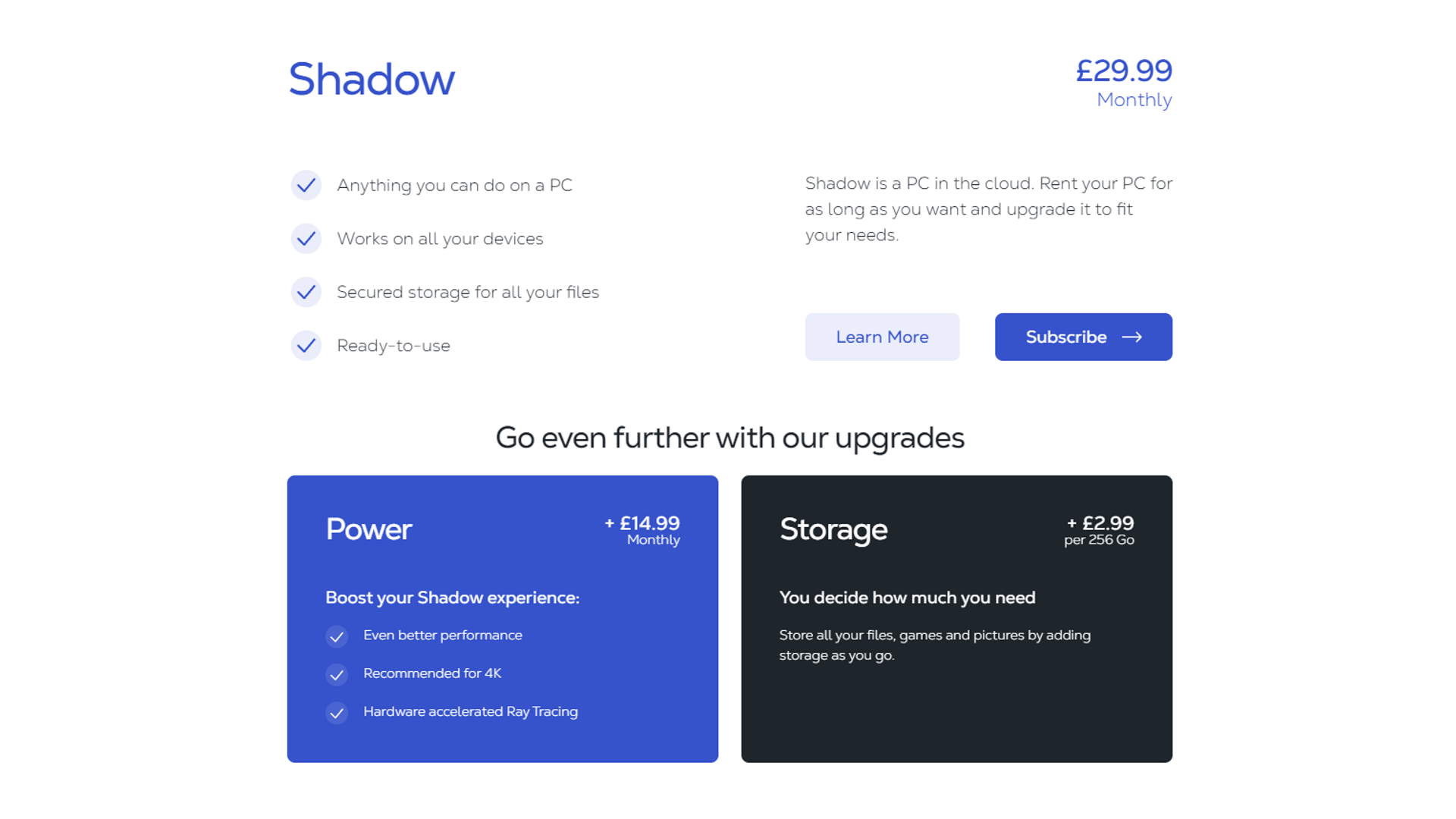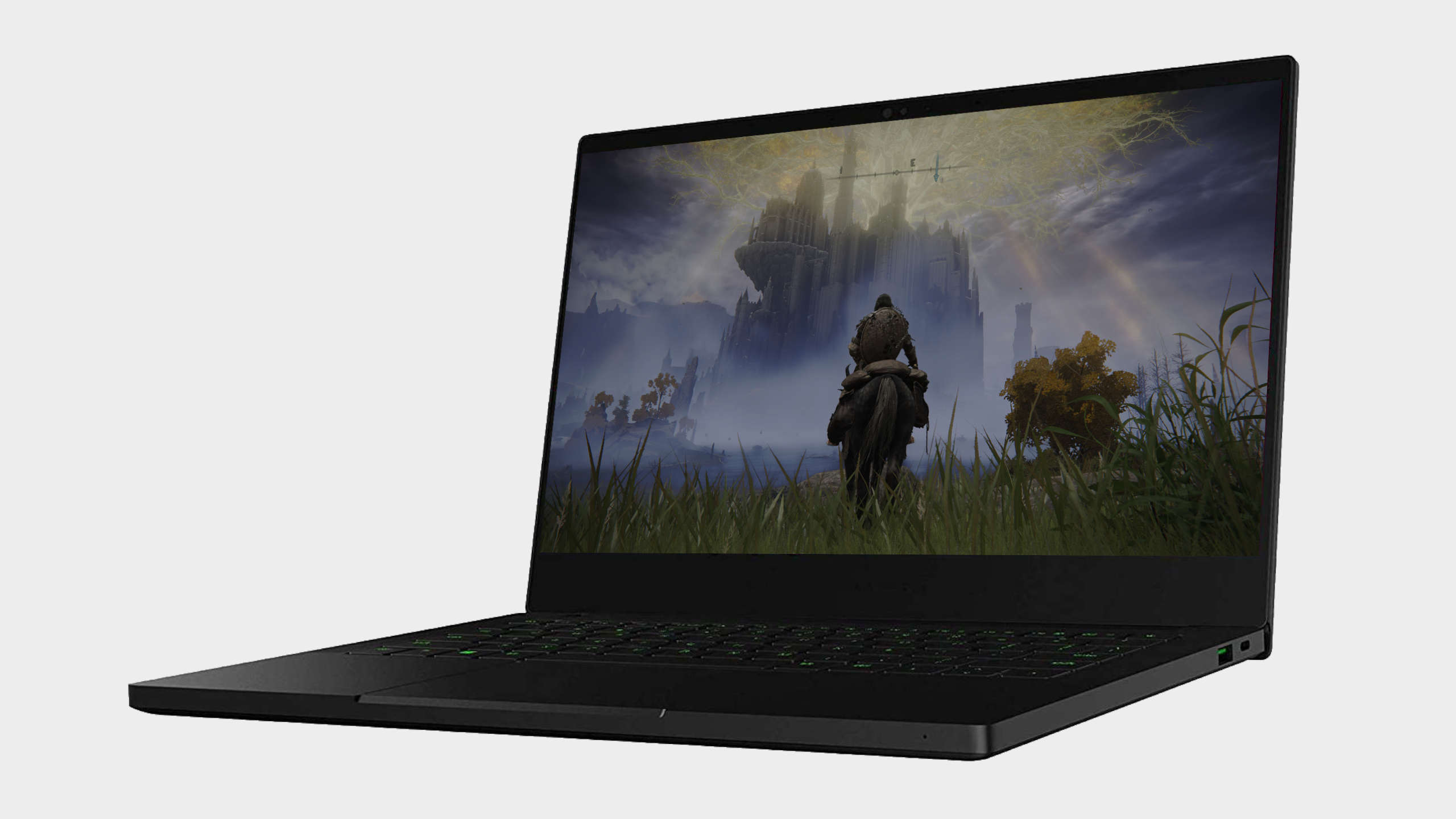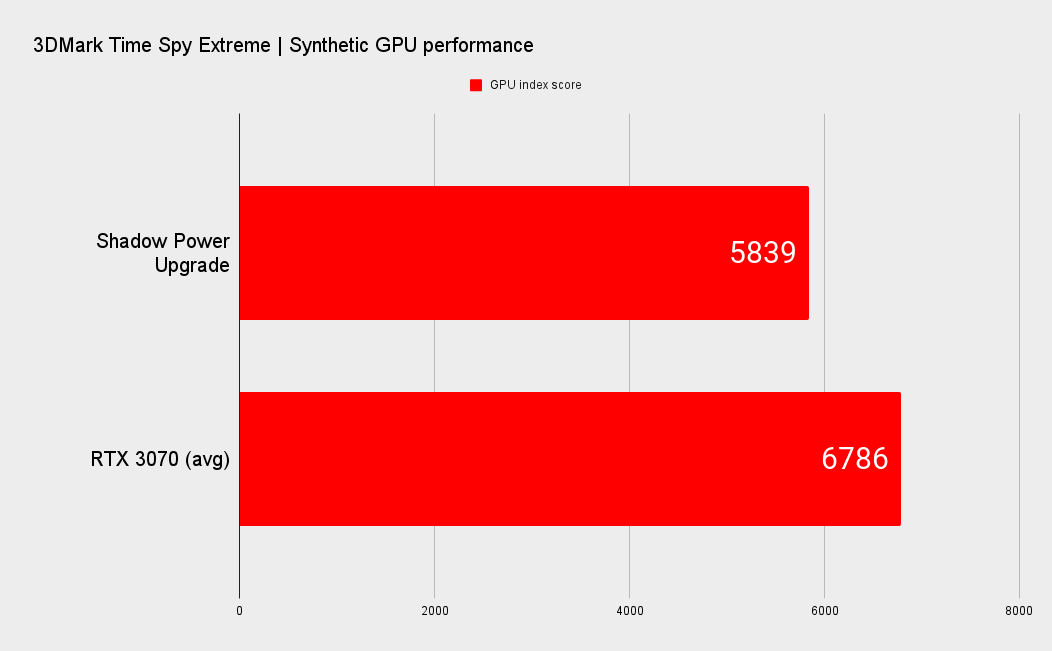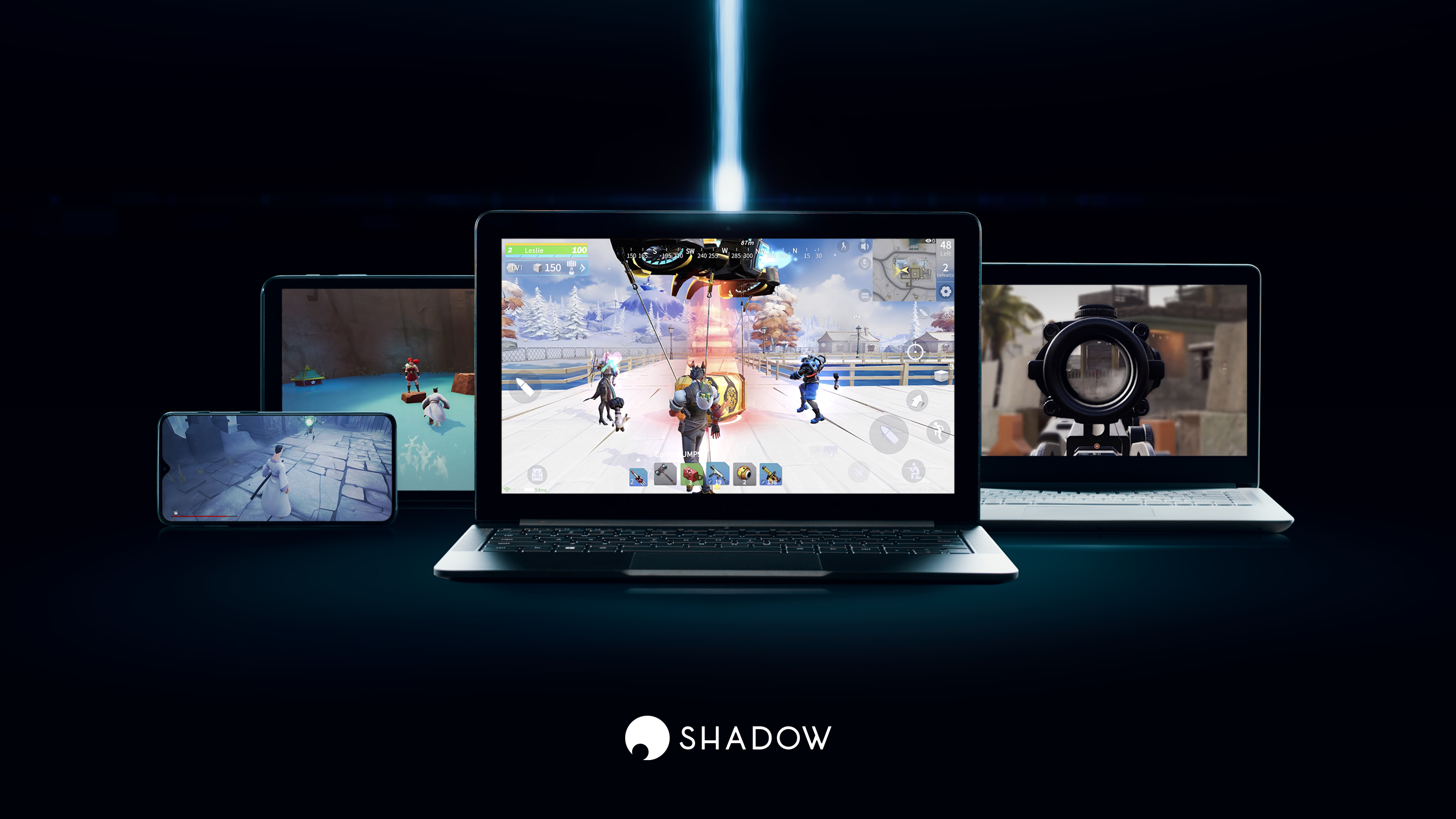Our Verdict
The libertarian utility of a completely cloud based PC is not lost with Shadow's Power Upgrade, but the promise of top-end performance is let down by thoroughly mediocre hardware by today's standard and a frustratingly high price tag.
For
- An unrestricted cloud PC
- Streaming tech is excellent
- Works on low bandwidth connections
Against
- Sky-high monthly cost
- Just a quad-core CPU analogue
- GPU cores are a bit off RTX 3070 performance
PC Gamer's got your back
Before Christmas and Covid rudely interrupted my 2022 work flow I was testing the Power Upgrade of Shadow's streamed PC service. And I really wanted it to be great. I've been a long-time fan of the French company's take on streaming, especially the service's more libertarian leanings, and regularly used the tech to game while I was away from home, where I couldn't lug my high-performance desktop PC.
But it's not a service that's been without its problems, given that the original company gone through bankruptcy—though with no disruption of service—and the promised upgrade from its original GTX 1080-level graphics cores has taken around three years to actually manifest.
The base concept of Shadow, however, means that I've been desperate to give it a fresh look. It's an idea unlike any other streaming service, where you're effectively given an app-based portal to your very own low-latency remote PC. It's an app that can live on practically any device, and immediately turn it into a high-spec computer. A high-spec computer that is yours, giving you free rein to install any app, run any program, do anything with the machine that you would on one you directly owned.
Or at least that was the original plan. Even when it launched in 2018 the GTX 1080 was already a couple of years old, and its quad-core, eight-thread CPU equivalent, and the 12GB of memory backing it up, felt decidedly last-gen. So, the vaunted RTX 2080 upgrade promised in 2019 should have been the next step up for the service.
But trouble with finances and server hardware meant the company repeatedly delayed the roll-out until it eventually filed for bankruptcy in 2021. The subsequent change of ownership has retained many of its original key players and the ethos remains the same now we've got an upgraded service, costing far more than the original, but with an actually rather disappointing spec.
It's now $45 per month—$15 more than the base GTX 1080 level and $25 more than the Ultimate tier of GeForce Now—and that gives you the gaming horsepower of an RTX 3070 or an unspecified AMD RDNA 2 GPU. Don't be confused by the FAQ which states that you could potentially connect to an RTX 4000 GPU, however, because there hasn't been some silent Ada update to the package. It simply refers to the RTX A4500 pro-class GPU it's using as an analogue for the performance of an RTX 3070 card.
You're still getting the equivalent of a quad-core, eight-thread CPU, however, and the memory is only upgraded to 16GB. And yes, you still only get 256GB of storage though you can get more, upgradeable to a full 2TB if you're willing to pay.

CPU: AMD EPYC 7543P (32-core/64-thread)
Accessible cores: 4
Accessible threads: 8
GPU: Nvidia RTX A4500
Memory: 16GB
Storage: 256GB (expandable to 2TB)
OS: Windows 10 64-bit
Price: $45 per month
Back in 2018 I was happy to forgive its middling specs for the seamless ability to deliver genuine gaming performance to a low-spec Dell XPS 13 office notebook. At $27 per month back then it was still expensive, but was far cheaper than buying an equivalent PC on credit.
There also wasn't really anything to give it serious competition. Stadia didn't do it for me, and GeForce Now was still in its infancy. And Shadow was promising that your subscription fee would either end up delivering you higher performance as the service upgraded going forward (another bonus over buying a static PC spec on credit), or drop if you were happy sticking with your current virtual setup.
Obviously, neither of those options came to pass.
And now, with the GPU performance equivalent to the 6th tier of Nvidia's last generation of graphics cards being touted as the 'Power Upgrade' and costing more than the GeForce Now and its RTX 4080-level gaming, it's tough to make a case for spending $45 a month on a Shadow PC.
It would take three years of a sub to match the cost of a full RTX 3070 machine right now, so there remains some value argument to be made.
In fairness, that works out as $540 per year and at that rate it would take three years of a sub to match the cost of a full RTX 3070 machine right now, so there remains some value argument to be made. But that does depend on what you're doing. If all you want to do is game then dropping $20 per month of the top tier of GeForce Now will give you access to a huge number of games on far superior hardware.
But, while both Shadow and GeForce Now require you to own every game you play on the service, there are no restrictions whatsoever on Shadow. If you want to play some ancient game emulated in DOSBox then you can absolutely do that on Shadow, or even play Kerbal Space Program or Elden Ring. Due to publisher and other limitations on what can be accessed on Nvidia's streaming service, not everything is available.
And, despite the last-gen hardware, all the good Shadow stuff is still there and its streaming technology remains truly impressive. I love the fact that you will often barely be able to discern the fact that you're not actually running on a local machine when you've got your Shadow PC running full-screen on a low-spec laptop. It even works with a touch screen, too, which I've struggled with on a number of other streaming platforms. Looking at you, Steam in-home streaming.

There can be some artifacting on fast moving content, on low performance network connections, but I've always been surprised at how effective the service remains even at low bandwidth levels. If classic PC strategy games are your thing, over FPS or action games, then that's unlikely to bother you. As is my wont, I've played many hours of Football Manager on Shadow over really dreadful AirBnB and hotel networks in my time, and have generally only good things to say about the experience.
And it's still just a PC. With an ultra fast internet connection. Because you're connecting to a virtual machine based in a data centre itself, it has a direct connection when you're downloading things on your Shadow, meaning 1Gb speeds at source. I've been hoovering Steam games down the pipes at almost 100MB/s.
Obviously, the sticking point is your own connection when you're trying to upload things to your Shadow PC via a USB stick plugged into your laptop, for example. Uploads, at least here in the UK, are often well behind download speeds, and that's long been a problem I've had when trying to actually work on a virtual machine.
Which brings me back around to the painfully old specs of the 'Power Upgrade.' Where Shadow has the edge over GeForce Now is that it's a full PC, and that means it's not just a gaming rig. My first experience with the setup was at Gamescom in 2017 where, after I'd gone through the gaming demo, the person I was speaking with whipped out her phone to show me how she could make quick edits to large Photoshop or InDesign files via the easy Android app.
Having a powerful virtual machine that can cope with the demands of high-end productivity software as well as games, means it could be all the PC you need, but in the cloud and accessible from anywhere. Even on a 4G signal.
But the fact your eighth of a EPYC 7543P CPU is restricted to the same four-core, eight-thread limits of the old specification means it's likely to actually have a weaker processor than the laptop you're running Shadow on. Unless you're running on a netbook or some aging Chromebook, that is. That's going to make any productivity task sluggish on the Shadow PC and almost entirely removes that side of things from the positive side of the streamed machine balance sheet. You're just not going to be able to work on Shadow doing anything you couldn't do on a basic office notebook.


It's not even like you're getting full RTX 3070 graphics card performance out of the 'Power Upgrade' either.
And this weak 2.8GHz CPU equivalent holds back the gaming performance, too. And it's not just about the core/thread counts, either—the single core Cinebench R23 numbers are well below even the Ryzen 5 5500, a $130 CPU that could dominate the best Shadow has to offer.
Then, looking at the raw 3DMark Time Spy Extreme score, it's some 14% slower than the average RTX 3070 GPU score you'll see out in the wild. So it's not even like you're getting full RTX 3070 graphics card performance out of the 'Power Upgrade' either.
In the end then, as much as I really wanted to love the experience of this update to Shadow's top tier, it already feels incredibly low-end, especially for its expensive $45 per month asking price. The overall utility of having a desktop PC accessible from anywhere is still useful, and maybe if Shadow had stuck with the original plan to drop the older tier in price to around $12 per month, keeping its original price for the update, I'd be all over that as a better option. But the GTX 1080 version is explicably still $30 per month for what can only be described as ancient hardware by today's standards.
The actual service is still good in the way it's delivered and I still think Shadow's streaming tech is supremely impressive. But the combination of a high monthly price, mid-range GPU option, and thoroughly low-end processor power, means the promise of a high-spec online PC simply hasn't been realised by the 'Power Upgrade.'
It is with multi-layered sadness that I have to finish with the words that have been going around and around in my head for all the time that I've been testing the 'Power Upgrade.' I can only describe the service as a shadow of its former self, and I am truly sorry to see it so, and that in the end I couldn't resist the weak pun.
The libertarian utility of a completely cloud based PC is not lost with Shadow's Power Upgrade, but the promise of top-end performance is let down by thoroughly mediocre hardware by today's standard and a frustratingly high price tag.

Dave has been gaming since the days of Zaxxon and Lady Bug on the Colecovision, and code books for the Commodore Vic 20 (Death Race 2000!). He built his first gaming PC at the tender age of 16, and finally finished bug-fixing the Cyrix-based system around a year later. When he dropped it out of the window. He first started writing for Official PlayStation Magazine and Xbox World many decades ago, then moved onto PC Format full-time, then PC Gamer, TechRadar, and T3 among others. Now he's back, writing about the nightmarish graphics card market, CPUs with more cores than sense, gaming laptops hotter than the sun, and SSDs more capacious than a Cybertruck.


